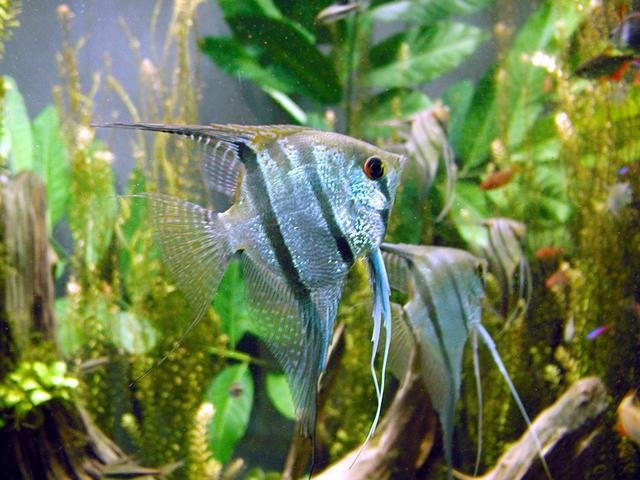
Natural food, or live feed, plays a vital role in the production of healthy and high-quality larvae of fish and freshwater shrimp.
Rearing larvae of freshwater fish and shrimp has shown that phytoplankton improves larval growth and survival, suggesting the beneficial effect of additional natural food during hatchery rearing.
On the other hand, zooplankton such as rotifers (Brachionus sp.), cladocerans (Moina sp.), and brine shrimp nauplii (Artemia) are widely used as starter live feed in the rearing of larvae of various fish and prawn species.
The appropriate choice of live feed depends on its nutritional composition as it influences larval nutrition. Despite the difficulty and high cost of culturing live organisms, they are essential in the early larval stages as they stimulate feeding and promote growth and survival.
In this context, researchers from the Southeast Asian Fisheries Development Center (SEAFDEC/AQD) published the manual “Culture of natural food for farmed freshwater fish and prawn larvae,” which describes the production and maintenance techniques of phytoplankton and zooplankton, essential for rearing fish and shrimp larvae in freshwater hatcheries.
The main author of the manual is Mr. Reylan Gutiérrez, technical assistant assigned to the SEAFDEC/AQD Freshwater Station in Binangonan. Co-authors include technical assistant Ms. Mildred Rutaquio, scientist Dr. Frolan Aya, and former SEAFDEC/AQD scientist Dr. Maria Rowena Romana-Eguia.
The manual describes feeding regimes for larvae of giant freshwater prawn (Macrobrachium rosenbergii), bighead carp (Aristichthys nobilis), catfish (Clarias macrocephalus), and silver therapon (Leiopotherapon plumbeus).
Phytoplankton Cultivation
Green algae (Chlorophyta) and blue-green algae (Cyanophyta) are the main groups of freshwater microalgae commonly used in hatcheries.
Stay Always Informed
Join our communities to instantly receive the most important news, reports, and analysis from the aquaculture industry.
Among the green algae, the most employed in hatcheries are Chlorella spp. and Nanochlorum sp. On the other hand, the most commonly used cyanobacteria include Arthrospira (Spirulina) platensis.
Regarding the physicochemical requirements for microalgae cultivation, the manual describes parameters such as pH, light, temperature, and aeration. It also reports the process of sterilization of culture materials, techniques for isolation and purification of microalgae.
The manual also describes techniques for the production and maintenance of monoalgal populations and the production of microalgae paste.
Zooplankton Cultivation
Rotifers and cladocerans are the zooplankton groups commonly used in freshwater aquaculture to feed fish larvae. The manual describes the process of cultivating rotifers (Brachionus spp.) and water fleas (Moina spp.).
The process of obtaining Artemia nauplii is also detailed in the manual.
Other Organisms
The manual describes the procedure for culturing the “bloodworm” Tubifex tubifex, as it is considered the cheapest natural food that can be easily obtained from aquatic systems.
Tubifex can be found at the bottom of lakes, rivers, sewers, streams, and canals. While commonly used as food for aquarium fish, it can also be used as live feed for catfish and eel larvae.
Conclusion
Among the appendices, the manual includes the formulation of culture media for Chlorella sp., Spirulina sp., and Conwy de Walne; and methods for counting phytoplankton and zooplankton.
SEAFDEC/AQD’s Aquaculture Extension Manual No. 71 is one of the six books launched during the 30th Book Launching on July 4, 2023, as part of the 50th Anniversary Celebration of the research center.
Reference (open access)
Reylan C. Gutierrez, Mildred P. Rutaquio, Frolan A. Aya, Maria Rowena R. Romana-Eguia. 2023. Culture of natural food for farmed freshwater fish and prawn larvae / Tigbauan, Iloilo, Philippines: Aquaculture Dept., Southeast Asian Fisheries Development Center.
Editor at the digital magazine AquaHoy. He holds a degree in Aquaculture Biology from the National University of Santa (UNS) and a Master’s degree in Science and Innovation Management from the Polytechnic University of Valencia, with postgraduate diplomas in Business Innovation and Innovation Management. He possesses extensive experience in the aquaculture and fisheries sector, having led the Fisheries Innovation Unit of the National Program for Innovation in Fisheries and Aquaculture (PNIPA). He has served as a senior consultant in technology watch, an innovation project formulator and advisor, and a lecturer at UNS. He is a member of the Peruvian College of Biologists and was recognized by the World Aquaculture Society (WAS) in 2016 for his contribution to aquaculture.




